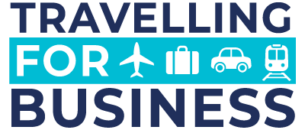Getting stuck on hold with customer support while you’re rushing to catch a flight or dealing with a travel emergency is every traveller’s nightmare.
Whether it’s a cancelled booking, lost luggage, or urgent itinerary changes, the last thing you need is to waste precious time listening to ‘on hold’ music.
But according to one expert, there’s a science to getting through quickly, and most travellers are calling at completely the wrong times.
“People tend to call customer support when it’s convenient for them, not when it’s optimal for getting through,” explains Anna Bielikova, Chief Operations Officer at Simply Contact, a multilingual contact centre provider that handles over 10 million customer requests annually. “Understanding how call centres operate can slash your wait times dramatically.”
Anna reveals the best times to call and shares insider strategies that can help you skip the queue entirely when you’re travelling.
The Best Times To Call Customer Support
According to Anna, the golden window for calling customer support while travelling is early morning UK time – specifically between 8:00 AM and 9:30 AM local time of the service provider.
“This timing hits the sweet spot,” says Anna. “Call volumes are naturally lower because most people don’t think to call right when lines open. You’re also avoiding both the overnight backlog and the inevitable mid-day rush.”
There’s another advantage to early morning calls that most people miss. “If the call centre is located abroad – say in India, the Philippines, or the US – calling early UK morning often overlaps with their afternoon or evening shift,” Anna explains. “These shifts tend to be significantly less busy than their peak mid-day periods.”
Timing your day of the week matters too. Avoid Mondays and the days immediately after public holidays, when call volumes spike dramatically. “Mid-week calling – Tuesday through Thursday mornings – gives you the best odds of getting through quickly,” Anna notes.
Smart Strategies To Skip The Wait
Anna reveals the best ways to avoid being put on hold for too long.
Use Callback Features When Available
Companies now usually offer callback options, but travellers often ignore them in panic mode. “Instead of staying on hold, request a callback and use that time productively – whether that’s checking in for your flight or grabbing coffee,” suggests Anna. “Most systems will hold your place in the queue and call you back within the estimated wait time.”
Try Alternative Contact Methods
Voice calls aren’t always your fastest option. “Live chat and WhatsApp support channels often have shorter wait times because they’re less popular than phone lines,” Anna reveals. “Agents can also handle multiple chat conversations simultaneously, which speeds up overall response times.”
Route Through International Numbers
Here’s a strategy most travellers never consider: if a company offers multiple international contact numbers, try calling a different region. “If you’re calling from the UK and the US line has a 45-minute wait, try the company’s Canadian or Australian number if they have one,” Anna suggests. “Different regional centres often have varying call volumes at any given time.”
Leverage Your Loyalty Status
Don’t forget to mention your loyalty program status immediately. “Premium members and frequent customers typically have access to dedicated support lines with much shorter wait times,” Anna explains. “Even if you don’t have top-tier status, mentioning any membership can sometimes get you transferred to a priority queue.”
Prepare Before You Fly
“Smart travellers preload all relevant support numbers into their phones before departure,” Anna recommends. “Have your account details, booking references, and policy numbers ready for quick verification. This cuts call time significantly and gets you to resolution faster.”
Anna Bielikova, Chief Operations Officer at Simply Contact, commented: “Global call centres operate on sophisticated routing systems that prioritise requests based on multiple factors – customer tier, issue urgency, and regional demand patterns. What most people don’t realise is that these systems are constantly adapting to call volumes across different time zones. A centre might route overflow calls from a busy US operation to a quieter European team, or vice versa. Understanding this dynamic is key to timing your calls strategically.
“The centres also use predictive analytics to staff appropriately, but there are always windows where capacity exceeds demand – and that’s when you want to call. Premium customers get priority routing, but even standard callers can benefit from knowing when these systems are under less pressure.”


